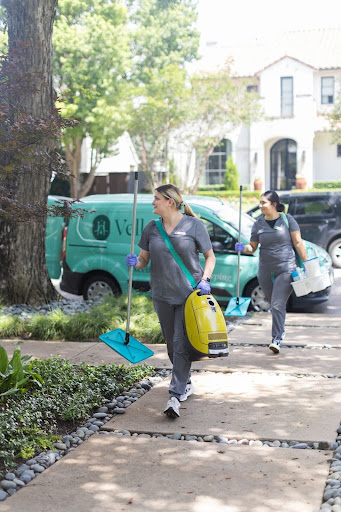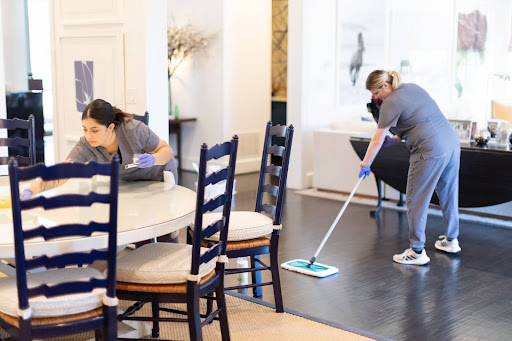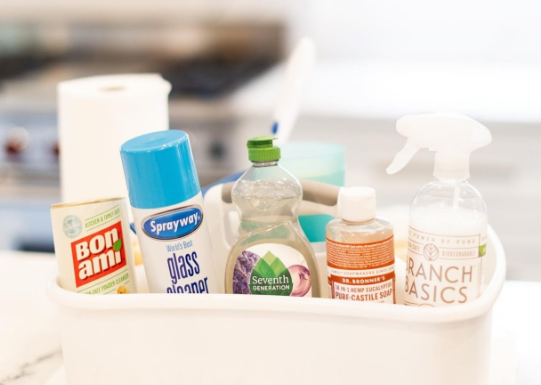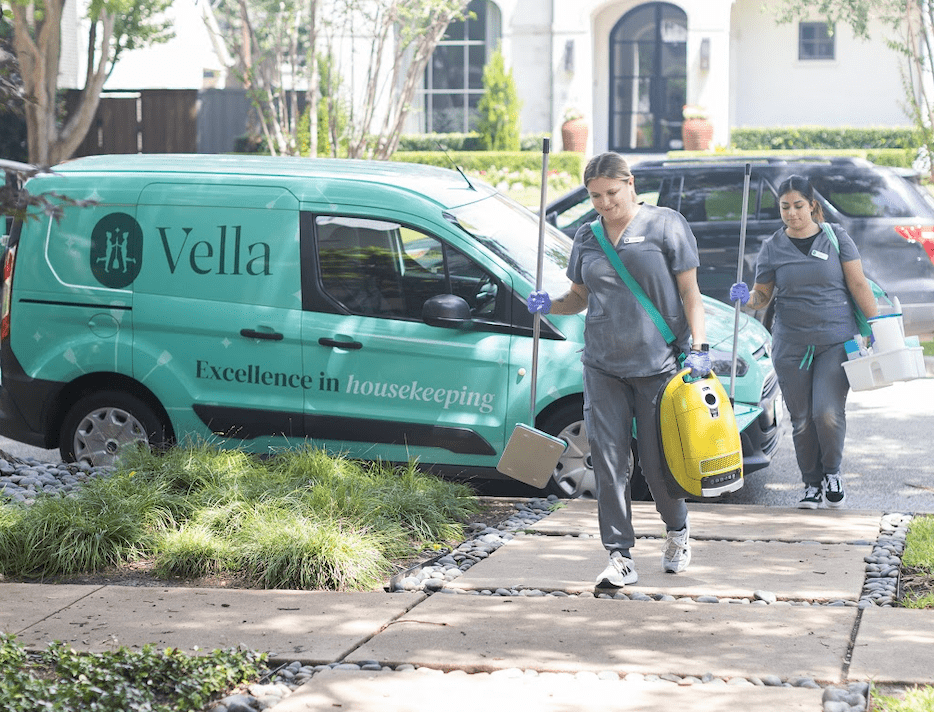Texas winds, dry air, and open landscapes may offer stunning sunsets, but they also bring a serious downside: indoor dust. If you live in a Texas city like Fort Worth, Dallas, or Plano, you’ve likely struggled with persistent dust buildup, and it’s more than a cleaning hassle.
Dust affects indoor air quality and can trigger allergy symptoms, especially for vulnerable individuals. At Vella, we specialize in dust prevention strategies tailored to the unique climate challenges of Texas homes. Here’s how you can keep your home cleaner, healthier, and dust-free—using expert-backed, low-effort techniques.
Why Do Texas Homes Get So Dusty in the First Place?
While dust is a worldwide problem, homes in Texas face it more severely due to common sources of dust, such as outdoor pollen, dry soil, and pet dander. Oftentimes, poor HVAC recirculation is to blame for it.
Check if your AC unit has a proper HVAC recirculation design to ensure that the air is being filtered and conditioned well. Also, check if you have leaky windows, door gaps, and attic air leaks; dust can easily sneak in. This will be hard to manage over time.
In addition, climate and materials like stones and tiles can increase airborne particles inside the house. This is why Texas houses might need extra care to completely get rid of the dust.
How to Reduce Dust in Your House with Better Airflow and Filtration
Better airflow alone cannot help with keeping your house clean. You also need good air filtration with it. A good ventilation system helps to remove foreign particles like dust, pollen, and other harmful pollutants. This is why an efficient HVAC system is required.
To get the best results with your HVAC system, it is recommended to replace filters every 30–60 days (use MERV 10+). You can also install an air purifier in high-traffic zones.
The role of ventilation is just as necessary. However, it is better to keep open windows during low-pollen hours only. It is also important to safely use ceiling fans as they can help in dust circulation inside your house.
By knowing the sources of pollutants, you can be more aware of how to reduce dust in your house. For best results, consult Vella’s services. We offer deep cleaning and basic cleaning across Texas, including Plano and Austin.
Smart Cleaning Habits That Actually Trap Dust
From basic dusting to professional dust cleaning, always use a tool that eliminates dust without spreading it. Here’s how to choose the right dusters.
The two most commonly used are microfiber or feather dusters.
Feather Dusters
- Ideal for delicate surfaces like chandeliers or picture frames.
- Gentle and effective for surface-level cleaning.
- Not recommended for deep cleaning due to fragility.
Microfiber Dusters
- Attract dust through static electricity.
- Great for deep cleaning floors, blinds, vents, and furniture.
- Use with a damp mop on hard floors to prevent dust resuspension.
Smart Cleaning Habits to Keep Dust at Bay
- Divide cleaning tasks across the week:
- Monday: Baseboards
- Wednesday: Ceiling fan blades
- Saturday: Under the furniture
- Always use a microfiber cloth or duster; dry cloths can stir up more dust.
- Mop instead of sweeping for hard surfaces.

How to Keep Dust Out of Your House from Entry Points
Dust enters through your doors, windows, and baseboards. Stop it at the source:
- Use indoor/outdoor door mats.
- Install weatherstripping and window seals.
- Make your home a shoe-free zone.
- Vacuum rugs near doors weekly with a HEPA filter vacuum.
Textiles and Upholstery: The Hidden Dust Traps in Every Room
Couch and bedding can be comfortable to humans and dust alike. It’s easier for dust to accumulate in the corners. This makes carpets, curtains, couch cushions, and bedding the prime dust zones.
Maintain cleanliness by washing bedding weekly, vacuuming upholstery with attachments, and rotating rugs outside for beating. You might also consider switching to roller blinds or leather furniture in high-dust rooms. Use an allergen-barrier pillow or mattress covers as an extra precaution for those at risk of allergy-related issues.
Stains on the delicate fabrics of the sofa or carpets can also risk being spoiled with harsh chemicals. To keep the hassle at bay, deep cleaning services are available. If you need an extra pair of hands, with Vella’s services, you can try our deep cleaning package.

FAQ: Your Top Dust Cleaning & Dust-Proofing Questions Answered
1. How often should I dust?
Aim for once a week. Break up tasks room-by-room if you’re short on time.
2. Are air purifiers effective?
Yes, especially HEPA air purifiers, which remove pet dander, pollen, and fine dust.
3. What’s the best vacuum for Texas dust?
Try the Sanitaire Professional Compact Canister; multi-surface, efficient, and HEPA-compatible.
4. Can houseplants help?
Yes! Certain plants absorb airborne particles and improve air quality.
5. Does Vella offer one-time deep dusting?
Absolutely. Our deep cleaning package includes top-to-bottom dust removal using safe, eco-friendly products.
Dust-proofing isn’t about perfection, but it’s about smart routines and better air quality. We are here to help you achieve a healthy and clean home.

